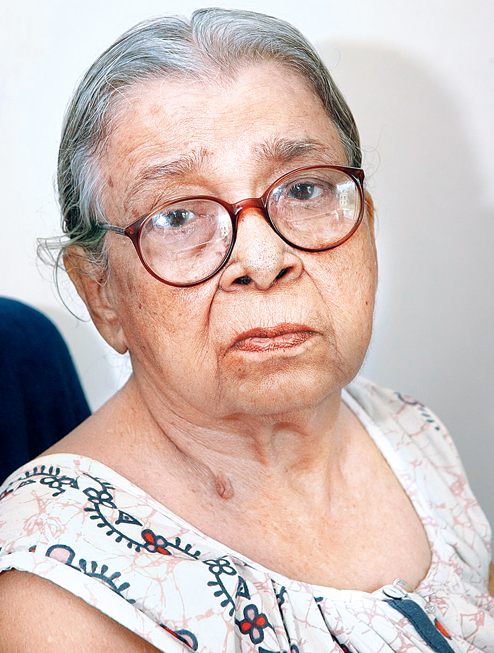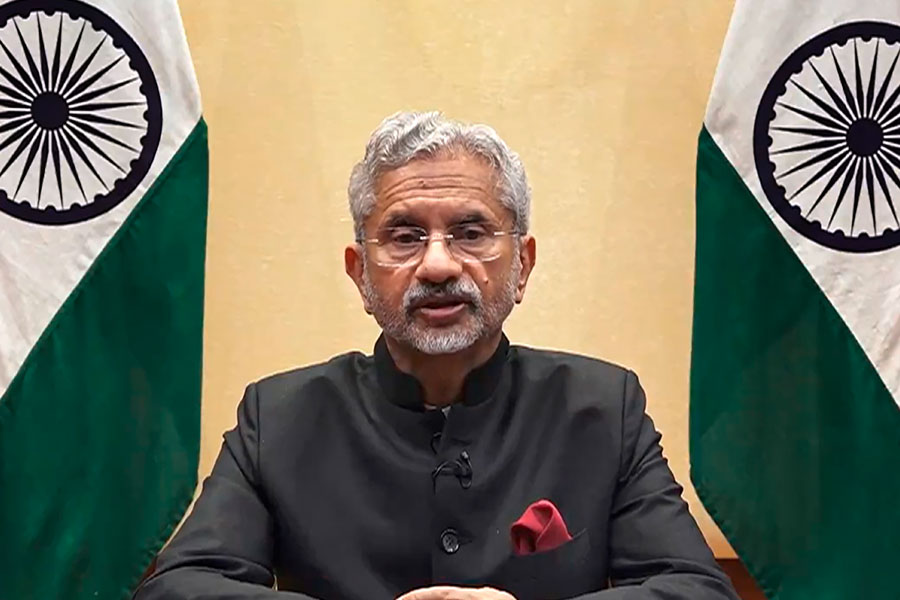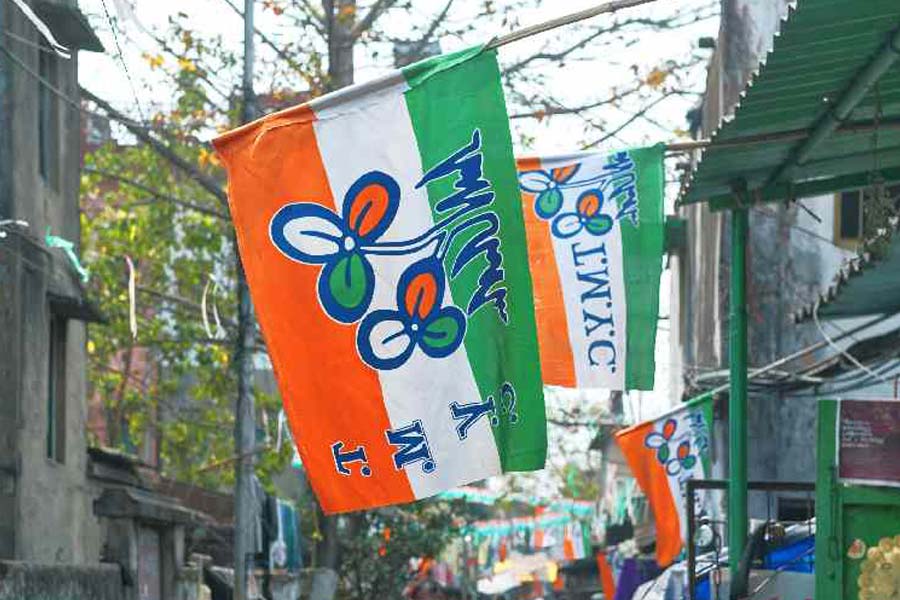
Mahasweta Devi, celebrated writer and radical activist, died in Calcutta on Thursday. She was 90.
Belle Vue Clinic officials said she died at 3.16pm due to "multi-organ failure that led to a cardiac arrest". She had been admitted with respiratory distress on May 22.
Mahasweta Devi was not known for mincing her words. At the 2013 Jaipur Literature festival, she looked small and frail as she appeared on stage to deliver the keynote address, but her speech turned out a tour de force.
In English heavy with a Bengali accent, she spoke about her early years, about the immensely intellectual and creative atmosphere of her family in Dhaka - her father Manish Ghatak was a writer, and her mother Dharitri Devi a writer and a social worker, filmmaker Ritwik Ghatak was her father's younger brother, Economic and Political Weekly (EPW) founder Sachin Chowdhury and sculptor Shankha Chowdhury were her mother's brothers.
With the same intensity, she spoke about her own awakening body. She was told as a young girl how attractive she was to men. She spoke movingly, with a directness that was startling, the redoubtable writer, the outspoken activist, then 87 - and one could hear the voice of a girl, still dazzled by the beauty of life, eager to embrace it, joyous and uninhibited. Her speech was called "Oh To Live Again". She said the "right to dream" was the first fundamental right of all people. The audience rose in applause.
Not that she wanted to charm every audience. Invited to a book launch at a Calcutta bookstore, Mahasweta Devi appeared uncomfortable. Among other things, the moderator had said she was a poet. "I do not come to such places often and I have never written a line of poetry in my life," she stood up and declared.
Her prose was like her, bold, dramatic, in-your-face, about the people who were the great preoccupation of her life: the dispossessed, especially the criminalised tribal populations she came to know from the Sixties, lived with and worked for: the Shabars, the Keriyas, the Santhals, the Hos, the Mundas, the forest people from whom the forest has been taken away. They called her Ma.
"What I wrote was their voice...," Mahasweta Devi said in a 1999 interview. It is not a coincidence that leading literary theorist Gayatri Chakravorty Spivak, author of the essay 'Can the Subaltern Speak?', wrote extensively on Mahasweta Devi and is her most notable translator.
"The thing is... that I have to write," Mahasweta Devi, tough-talking, bidi-toting, had gone on to say in the interview, and the tribals "were the last word".

She first came into prominence with Hajar Churashir Ma (1974), the story of a mother who lost her son to the Naxalite movement. Made into a film by Govind Nihalani, it is her best-known novel. She did not consider Hajar Churashir Ma her best work. She preferred Chotti Munda Aar Tar Teer (1980), about the life of a tribal as India moves from British rule to Independence.
But her first major work is the life of the queen of Jhansi, Jhansir Rani, undertaken in an extraordinary way. In her early twenties, Mahasweta Devi married playwright Bijon Bhattacharya. Their son Nabarun Bhattacharya, another trailblazing writer, was born in 1948. The couple had talent, but no money, and suffered because of being "Communists". Their marriage would not last.
In 1951-52, in Bombay with Bhattacharya, Mahasweta became interested in the life of the queen of Jhansi. She landed in Jhansi alone, to research the book by talking to people. She later said that she could come away from such a trip unharmed, because "I was mad".
Around this time, she also wrote a story called Layli Asmaner Aina. It inspired the Hindi film Sunghursh (1968), featuring Dilip Kumar and Vyjayanthimala. Set against the background of the Thuggee community, it also indicates Mahasweta Devi's future, great interest in the criminalised communities once "notified" by the British - and the use of history to tell their stories.
History, Mahasweta Devi repeatedly said, was what she wrote. As she wrote the voices of the people. The criminalisation and displacement of the tribals needs to be written in this history. She won several prestigious awards: the Magsaysay, Padma Vibhushan, Jnanpith and Sahitya Akademi.
One of her best-known stories Stanyadayini, translated by Spivak as The Breast Giver, is about Jashoda, a wet nurse, but is an allegory of an exploited nation, or of earth. Aranyer Adhikar (1977) is about the tragic, turbulent life of Munda leader Birsa Munda, who fought the British. She first encountered tribal life in all its harshness and poverty in 1965, on a visit to Palamu. It sharpened her contempt for middle-class life.
"She is outstanding on two counts in the context of Indian literature," says critic Samik Bandyopadhyay, who is her first translator. "She gave a new meaning to the writing of the historical novel where somebody is not going by recorded official history but checking, counterchecking, measuring and critiquing that history through field work and also the oral traditions in which history is carried on," he says, mentioning Jhansir Rani and Aranyer Adhikar. "On the other hand is the entire exploration in depth of the lives of the marginalised who have lost the right to their own forest...This is long before the upsurge of Dalit literature and Dalit voices."
She wrote some of her finest, mostly autobiographical, works for children, tales that also give a glimpse into her eccentric, but uncommonly talented, family.
From the Sixties, after her marriage ended, she had begun to work as a lecturer in English at Vijaygarh Jyotish Ray College. She had studied English at Visva-Bharati and Calcutta University. In the Eighties, she would give up her college job to work as a reporter for the Bengali daily Jugantar.
"Mahasweta played an important part in drawing attention to the Naxalite movement and tribal people," says writer Raghab Bandyopadhyay. "Hajar Churashir Ma was very effective in creating a sympathy for the Naxalite movement among the middle classes."
She worked passionately for the tribal communities that she lived with, in Bengal, Bihar, Madhya Pradesh, Chhattisgarh. In her later years, however, she disappointed some, who thought she had turned her back on her own ideas. "At one point she grew out of her direct line of engagement with the tribals.... Illness had struck her for the last three-four years. But for the 16-17 years before that, there was no significant work," says Samik Bandyopadhyay.
She lost her son Nabarun Bhattacharya in 2014. Their relationship was not easy. Nabarun, the creator of Fyatarus, fantastic winged creatures who did their bit to question Bengali society and establishments, had been critical of his mother's politics and writing.
For a while, Mahasweta Devi had actively supported Mamata Banerjee, especially on the Trinamul leader's stand on Nandigram and Singur, on the rights of a people to their land. Chief minister Mamata Banerjee tweeted on Thursday: "India has lost a great writer. Bengal has lost a glorious mother. I have lost a personal guide. Mahasweta Di rest in peace."










